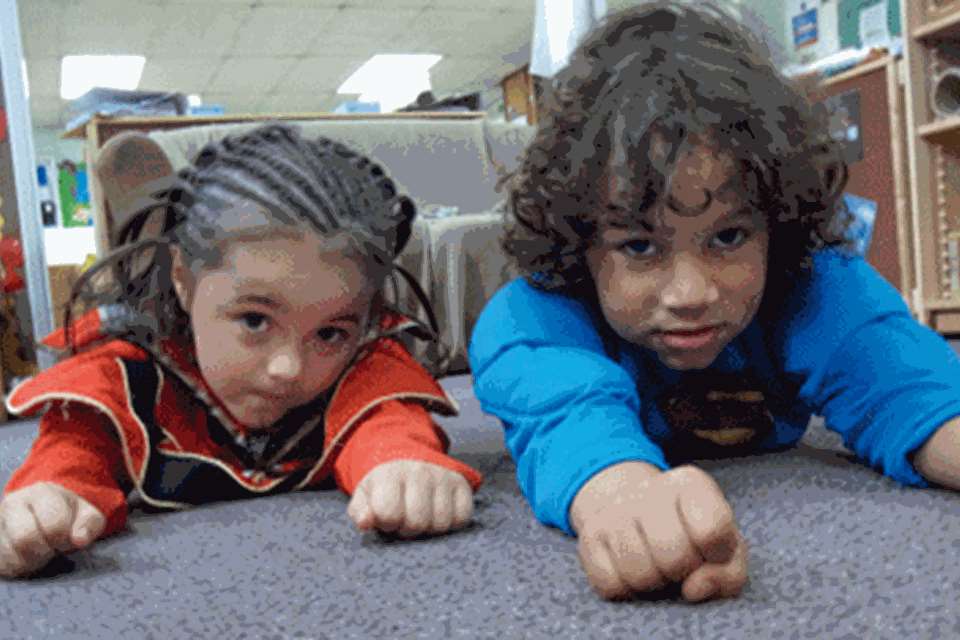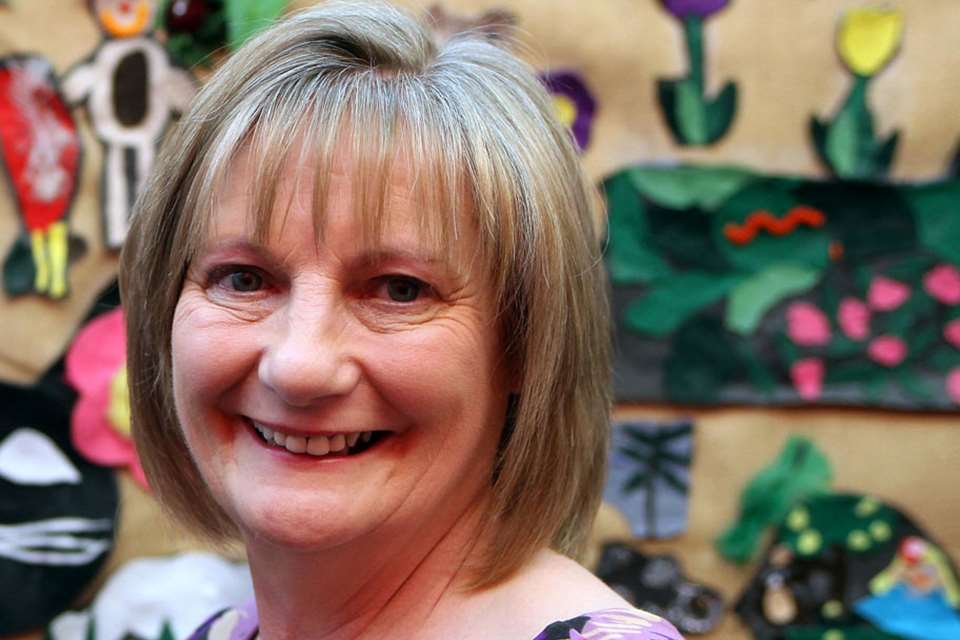Learning & Development: Literacy - On their marks
Elizabeth Leer, Rothesay Nursery School
Monday, May 29, 2017
How one nursery school has boosted boys’ writing. By Elizabeth Leer
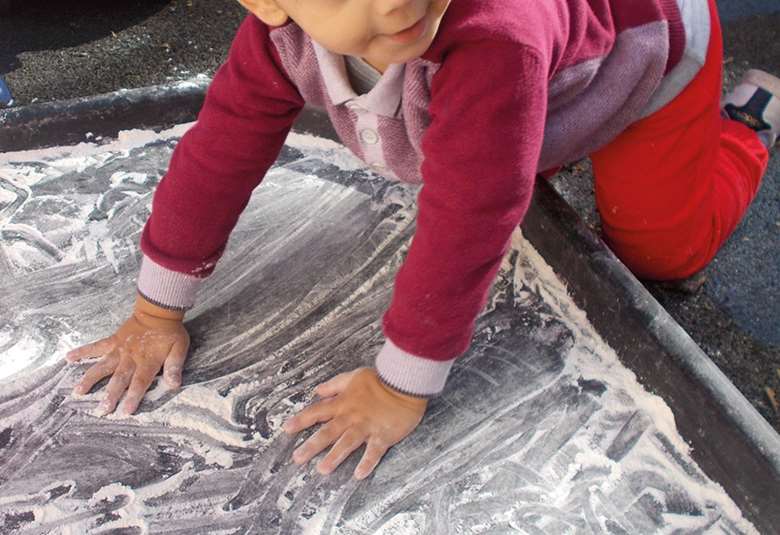
In response to a significant gender gap in children’s writing at our school, we embarked on an action research project to investigate the barriers to boys’ engaging in writing activities and devised strategies to help them become confident writers. As well as benefiting individual children within an Intervention Group, the project has had a positive impact on all boys.
Based in Luton, Rothesay Nursery School caters for children aged two to four, most of whom have English as an additional language. We also cater for children with severe and complex special needs. Our 2014-2015 data for children’s emergent writing showed that 90 per cent of girls were at expected levels, compared with 82 per cent of the boys, and while 42 per cent of girls were working above expectations, the figure for boys was just 18 per cent.
Addressing this disparity through action research enabled us to focus on a particular group of children, research new ways to support them and reflect on and improve our practice and pedagogy.
CHOOSING THE FOCUS
From our observations, we could see that many boys:
- were reluctant to write or choose mark-making activities independently
- did not appear to enjoy mark-making activities, including aspects of ‘squiggle wiggle’ (a programme designed to enhance gross and fine motor skills for young emergent writers).The research team felt that the unappealing nature of the mark-making activities might account for the developmental delay in boys’ writing, and so they decided to focus on how to make activities more interesting. They also concluded that boys require a purpose for writing.
The two questions that they sought to address were:
- Could development of fine motor skills be a barrier to boys accessing mark-making?
- What encourages boys to write?
WHY ARE BOYS RELUCTANT WRITERS?
While the bones in young girls’ hands develop at approximately four years and two months, those in boys develop at five years and six months, which could make holding a pencil uncomfortable (Boyd and Bee 2014).
Boys’ reluctance to engage in writing also needs to be seen within the context of overall development, the ‘enabling environment’ and the role of the supportive adult.
Girls are consistently outperforming boys across all areas of learning, and ‘these early gender differences in achievement reflect a pattern that can continue into Key Stage 4’ (DCFS 2007). Research has identified various factors behind this disparity (Daly 2002, Estyn 2008, DfE 2012), including the failure to offer children an active and free-play environment.
The DfE’s What is the research evidence on writing? stresses the importance of creating effective early play opportunities, and a sensitive, knowledgeable adult capable of tuning in to children’s interests is critical in achieving this, particularly with boys.
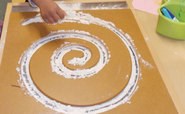 Consultant Linda Tallent (2016), who specialises in boys’ early learning, notes that ‘positive, supportive work by pre-school providers and early years practitioners can be absolutely vital in breaking down some barriers to boys’ achievement at the very beginning of their educational journey’.
Consultant Linda Tallent (2016), who specialises in boys’ early learning, notes that ‘positive, supportive work by pre-school providers and early years practitioners can be absolutely vital in breaking down some barriers to boys’ achievement at the very beginning of their educational journey’.
This may require practitioners to reassess their own perceptions of boys’ play and learning. The 2007 DCFS report stated, ‘Sometimes practitioners find the chosen play of boys more difficult to understand and value than that of girls. They may choose activities in which adults involve themselves least, or play that involves more action and a greater use of the available space, especially outdoors. “Some boys who are at risk of becoming disaffected at a very young age have shown significant improvements if their learning takes place outside. Opportunities which reflect all six areas of learning outdoors must be available” (Bilton et al 2005).’
IN RESPONSE
On the strength of our observations and research, we decided to:
- create two intervention groups of boys with low attainment in emerging writing skills. One group was made up of two-year-olds, the other of three- and four-year-olds
- assess and adapt our learning environment to entice boys into mark-making activities
- offer more writing opportunities for boys.
Focused activities
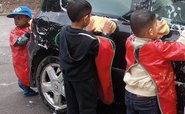 For the intervention groups, we organised a range of activities to strengthen their fine motor skills. For the three- and four-year-olds, these were:
For the intervention groups, we organised a range of activities to strengthen their fine motor skills. For the three- and four-year-olds, these were:
Washing We provided buckets of soapy water, sponges and aprons for the children to wash a car and encouraged them, in particular, to make circular and up and down movements.
Spraying We attached pictures of cars to a wall and encouraged the children to use water sprays to spray round the outline of the car. We also provided materials for the group to draw cars from observation.
Modelling We provided clay, tools, car books and toy cars for the children to mould the clay and create models of cars.
Drawing We made available toy cars, pens, paper and books about cars to encourage the children to draw pictures of cars, and so promote mark-making with meaning.
- The activities for the two-year-olds’ group had similar themes. We encouraged them to:
- create circular movements when washing a car
- squeeze clay when making models of cars
- paint over the outline of a drawing of a car
- draw cars and mark-make using chalks.
Indoors and out
We already acknowledge the need to strengthen children’s hand muscles and provide activities such as playdough and threading for this purpose. In addition to what we already offer, we provided opportunities for:
- mark-making in sand
- ‘dark-den’ writing, such as writing under a table
- writing and creating large movements by using chalks outside
- using water sprays for mark-making
- using interactive whiteboards to encourage free writing or mark-making over outlines.
We stuck superhero pictures on the writing table to entice the boys to use this area.
Assessment
As part of our termly assessment of children’s mark-making, we encourage both boys and girls to draw ‘Who they love’, with an expectation that they will draw a person. However, during the project we found research (Sax 2006) suggesting that boys and girls, when given pen and paper, draw different subjects. While girls will tend to draw animals or flowers, most boys will draw a point of action. As a result we have decided to change the starting point from ‘Who do you love?’ to ‘What do you want to draw?’ We will then use questions such as ‘Tell me about your drawing’ to further understand each child’s drawing.
IMPACT
At the end of the project, we compared the current and previous years’ data and found that boys had made strides both in progress and attainment – though there was also a surprise drop in girls’ expected progress, from 73 per cent to 53 per cent (see box).
This drop could be due to two main factors. The first was a smaller cohort of girls on roll, and the second was the stronger emphasis on the boys. This research has helped us to focus on all areas of writing, with both genders being tracked.
When assessed on the Luton Advanced Tracking System, it was found the boys in the intervention group for three- and four-year-olds made an average of 4.4 levels of progress, which is above the expected three-level rise and above the school’s desired four levels of progress.
From our video footage, we concluded that:
Boys would more readily engage in a writing task if there was something that interested them, particularly the car wash.
They liked exploring the various mark-making opportunities that we had provided.
The water sprays were particularly effective in encouraging mark-making and developing fine motor skills, and were accessed by children at all levels of development.
The interactive whiteboard was a valuable tool and, with support, the children used this to write and they were proud to have their marks printed.
The team plans to continue to use the intervention to target specific children and adapt it to encompass the children’s interests. They will continue to use water sprays outside and to regularly include a focused writing activity both inside and outside.
PROGRESS AND ATTAINMENT IN WRITING
At or above expected attainment
Boys Girls
2014-2015 82% 90%
2015-2016 86% 93%
At or above expected progress
Boys Girls
2014-2015 73% 73%
2015-2016 81% 53%
Above expected attainment
Boys Girls
2014-2015 18% 42%
2015-2016 27% 50%
Above expected progress
Boys Girls
2014-2015 64% 52%
2015-2016 70% 46%
References
Boyd D and Bee H (2014)The Developing Child. Pearson Education
Bilton Het al (2005)Learning Outdoors: Improving the quality of children’s play outdoors. David Fulton
DCFS (2007)Confident, capable and creative: supporting boys’ achievements
Daly C (2002) ‘Literature search on improving boys’ writing’, http://dera.ioe.ac.uk/4781
Estyn (2008)Closing the gap between boys’ and girls’ attainment in schools
Education Standards Research Team, Department for Education (2012)What is the research evidence on writing?, www.gov.uk/government/publications/what-is-the-research-evidence-on-writing
Sax L (2006)Why Gender Matters: What parents and teachers need to know about the emerging science of sex differences.Broadway
Tallent L (2015) ‘Breaking down barriers to boys’ success’, www.nurseryworld.co.uk
Elizabeth Leer is a teacher at Rothesay Nursery School. The whole school team was involved in the action research project, and principally Early Years Educators Clare Greatbatch and Ann Gatland and early years workers Nuala McLaughlin and Louise Garbett.



